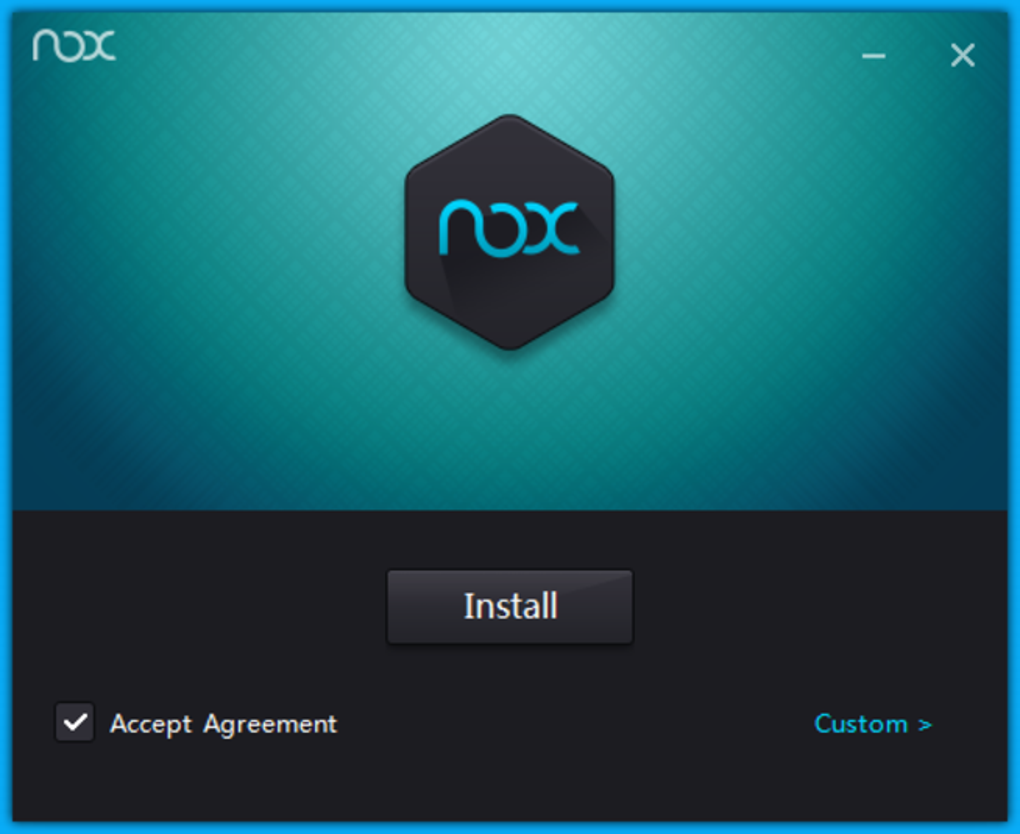- PPSSPP is an open source, cross-platform PSP emulator which allows you to play your PSP games on Android, Windows, Mac or Linux. With PPSSPP you can play your PSP games on your PC in full HD resolution, or play on your tablet for a big-screen mobile gaming experience. PPSSPP enhances the gaming experience in more ways than one.
- Tani app emulator android hadda ku faantaa qabo in ka badan 85million users iyo tirinta, waxaa shaki la'aan waa mid ka mid ah emulators ugu fiican android labada user iyo xayeysiiyaha. Tani download emulator android lacag la'aan ah pc si toos ah uga raadsan kartaa codsiyada mobile iyo muujiyaan on interface user ka dib marka la rakibo.
- Nox App Player 3.8.5.1 - High-performance Android emulator. Download the latest versions of the best Mac apps at safe and trusted MacUpdate.
This article describes how to get ionic up and running on osx and android and ios emulators
What is Ionic?
Mac OS X El Capitan ISO – Download Mac OS El Capitan ISO Setup Files Free: The MacBook and the Apple’s Mac are the second most widely used and famous portable Computers. The first place is occupied by the Family of Windows Computers, this is due to their cheaper prices, and ease of access. Bluestacks Android Emulator for Mac OS. There are certain emulators that are easy to install.
Ionic is a complete open-source SDK for hybrid mobile app development. Built on top of AngularJS and Apache Cordova, Ionic provides tools and services for developing hybrid mobile apps using Web technologies like CSS, HTML5, and Sass. Apps can be built with these Web technologies and then distributed through native app stores to be installed on devices by leveraging Cordova. Ionic was created by Max Lynch, Ben Sperry, and Adam Bradley of Drifty Co. in 2013, and is used by software developers around the World.
What is Android
Android is a mobile operating system (OS) currently developed by Google, based on the Linux kernel and designed primarily for touchscreen mobile devices such as smartphones and tablets. Android’s user interface is mainly based on direct manipulation, using touch gestures that loosely correspond to real-world actions, such as swiping, tapping and pinching, to manipulate on-screen objects, along with a virtual keyboard for text input. In addition to touchscreen devices, Google has further developed Android TV for televisions, Android Auto for cars, and Android Wear for wrist watches, each with a specialized user interface. Variants of Android are also used on notebooks, game consoles, digital cameras, and other electronics. As of 2015, Android has the largest installed base of all operating systems. It is the second most commonly used mobile operating system in the United States, while iOS is the first.
Initially developed by Android, Inc., which Google bought in 2005, Android was unveiled in 2007, along with the founding of the Open Handset Alliance – a consortium of hardware, software, and telecommunication companies devoted to advancing open standards for mobile devices. As of July 2013, the Google Play store has had over one million Android applications (“apps”) published, and over 50 billion applications downloaded. An April–May 2013 survey of mobile application developers found that 71% of developers create applications for Android, and a 2015 survey found that 40% of full-time professional developers see Android as their priority target platform, which is comparable to Apple’s iOS on 37% with both platforms far above others. At Google I/O 2014, the company revealed that there were over one billion active monthly Android users, up from 538 million in June 2013.
Android’s source code is released by Google under open source licenses, although most Android devices ultimately ship with a combination of open source and proprietary software, including proprietary software required for accessing Google services. Android is popular with technology companies that require a ready-made, low-cost and customizable operating system for high-tech devices. Its open nature has encouraged a large community of developers and enthusiasts to use the open-source code as a foundation for community-driven projects, which add new features for advanced users or bring Android to devices originally shipped with other operating systems. At the same time, as Android has no centralised update system most Android devices fail to receive security updates: research in 2015 concluded that almost 90% of Android phones in use had known but unpatched security vulnerabilities due to lack of updates and support. The success of Android has made it a target for patent litigation as part of the so-called “smartphone wars” between technology companies.
What is iOS
Android Emulator For Mac El Capitan
iOS (originally iPhone OS) is a mobile operating system created and developed by Apple Inc. and distributed exclusively for Apple hardware. It is the operating system that presently powers many of the company’s mobile devices, including the iPhone, iPad, and iPod touch. In October 2015, it was the most commonly used mobile operating system, in a few countries, such as in Canada, the United States, the United Kingdom, Norway, Sweden, Denmark, Japan, and Australia, while iOS is far behind Google’s Android globally; iOS had a 19.7% share of the smartphone mobile operating system units shipped in the fourth quarter of 2014, behind Android with 76.6%. However, on tablets, iOS the most commonly used tablet operating system in the world.
Originally unveiled in 2007, for the iPhone, it has been extended to support other Apple devices such as the iPod Touch (September 2007), iPad (January 2010), iPad Mini (November 2012) and second-generation Apple TV onward (September 2010). As of January 2015, Apple’s App Store contained more than 1.4 million iOS applications, 725,000 of which are native for iPads. These mobile apps have collectively been downloaded more than 100 billion times.
The iOS user interface is based on the concept of direct manipulation, using multi-touch gestures. Interface control elements consist of sliders, switches, and buttons. Interaction with the OS includes gestures such as swipe, tap, pinch, and reverse pinch, all of which have specific definitions within the context of the iOS operating system and its multi-touch interface. Internal accelerometers are used by some applications to respond to shaking the device (one common result is the undo command) or rotating it in three dimensions (one common result is switching from portrait to landscape mode).
iOS shares with OS X some frameworks such as Core Foundation and Foundation Kit; however, its UI toolkit is Cocoa Touch rather than OS X’s Cocoa, so that it provides the UIKit framework rather than the AppKit framework. It is therefore not compatible with OS X for applications. Also while iOS also shares the Darwin foundation with OS X, Unix-like shell access is not available for users and restricted for apps, making iOS not fully Unix-compatible either.
Major versions of iOS are released annually. The current release, iOS 9.1, was released on October 21, 2015. In iOS, there are four abstraction layers: the Core OS layer, the Core Services layer, the Media layer, and the Cocoa Touch layer. The current version of the operating system (iOS 9), dedicates around 1.3 GB of the device’s flash memory for iOS itself. It runs on the iPhone 4S and later, iPad 2 and later, iPad Pro, all models of the iPad Mini, and the 5th-generation iPod Touch and later.
What is OSX 10.11 (El Capitan)
OS X El Capitan (el-kap-ɪ-tan) (version 10.11) is the twelfth major release of OS X, Apple Inc.’s desktop and server operating system for Macintosh computers. It is the successor to OS X Yosemite and focuses mainly on performance, stability and security.Following the California landmark-based naming scheme introduced with OS X Mavericks, El Capitan was named after a rock formation in Yosemite National Park.
The first beta of OS X El Capitan was released to developers shortly following the 2015 WWDC keynote on June 8, 2015. The first public beta was made available on July 9, 2015. There were multiple betas released after the keynote. OS X El Capitan was released to end users on September 30, 2015, as a free upgrade through the Mac App Store.
What is an emulator

In computing, an emulator is hardware or software that enables one computer system (called the host) to behave like another computer system (called the guest). An emulator typically enables the host system to run software or use peripheral devices designed for the guest system.
What is Zsh

The Z shell (zsh) is a Unix shell that can be used as an interactive login shell and as a powerful command interpreter for shell scripting. Zsh can be thought of as an extended Bourne shell with a large number of improvements, including some features of bash, ksh, and tcsh.
Examples
According to
And
And
And then to
Setup

- Android setup
JDK
Download from
After install on the terminal
Android Studio and SDK
Download from
After install on the terminal
Ant
Download from
After install on the terminal
Download Android API
Open a new terminal and type:
If everything is working correct it will open up the Android SDK Manager.
Install API 22 and 23 or the most two recent versions with SDK Platforms and Arm Image checked
Configure android emulator
Open a new terminal and type:
Click the create button and add at least 1 device to emulate with this params:
Click Ok
Start it to check if it works
iOS setup
Install Xcode from app store. This will take awhile since it is ~2 gigs in size
Once install is completed, open xcode and accept the license
Install the IOS Simulator that Ionic will use.
Install
####Install Ionic and dependencies
Install nodejs and homebrew via: http://www.johnpapa.net/how-to-use-npm-global-without-sudo-on-osx/
It is better when you have node installed with brew and npm installed on its own, or else, if in trouble with brew and npm, give owner permission to some folders as said it in http://stackoverflow.com/questions/18923191/npm-install-fails
Install ionic and its dependencies
If you get:
Then you must:
You should do the last step every time you get an error on installing with npm
Testing
Check android:
You must get:
Check iOS
You must get:
Conclusion
Android Emulator On Mac
Ionic works in its version stable. Versions nightly and alpha won’t work. So don’t do this:
Authors:
Nadir Palacios
Justin James

Dara Bun
The ionic team
Please enable JavaScript to view the comments powered by Disqus.blog comments powered by Disqus
